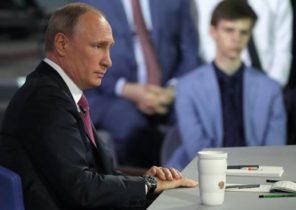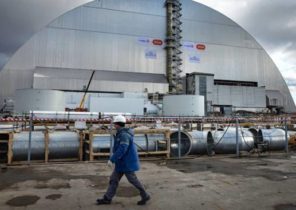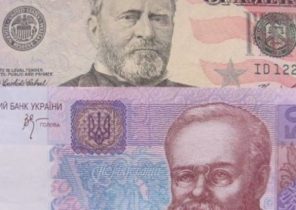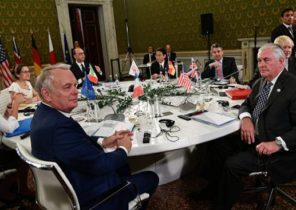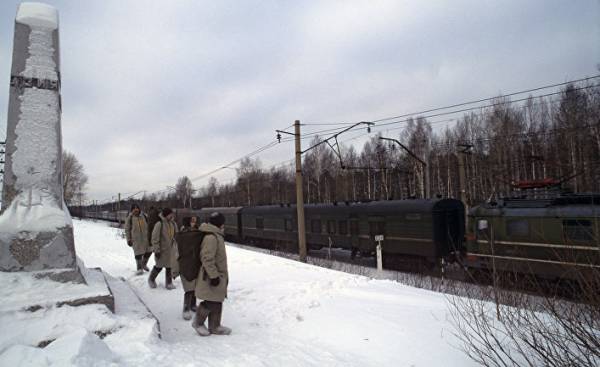
In 1868, in Orenburg, Russian steppe, the city, located about a thousand kilometers East of Moscow, was inaugurated the new Department of Russian geographical society. Speaking at the opening ceremony, the Orenburg Governor-General Nikolai Kryzhanovskii urged geographers to support the European civilizational mission of Russia in those regions, which he called “wild Asia.” But for this they had to determine where it begins, this “wild Asia”.
Russian geographers had determined that part of the border between Europe and Asia is the Ural river, which flows through the Orenburg. Kryzhanovsky, it seems, agreed: “physical geography of the steppe has nothing to do with the physical geography of the Orenburg region on this side of the Urals,” he said in his speech. “There are so many visible natural wealth, so much poverty there. How many hopes for the future, so it is all hopeless, how many in here life, so it is petrified of deadness”.
But where exactly was “there”? Kryzhanovsky said geographers that they will conduct further studies to “more clearly Express where exactly lies the border between Europe capable of civilized life, and Asia, obrechenno on his dead hopelessness.”
Today in Orenburg continues with European ambiance. Its pretty centre is like a small Museum under the open sky, reminiscent of the days when Orenburg was an important colonial center, and not the provincial town of medium size he is today. The town has a miniature reconstruction of the gate of the XVIII century, the Orenburg granted by Empress Elizabeth (symbolizing the role of Orenburg as a gateway to the East), and near the gate is a beautiful house, painted yellow, where Kryzhanovsky and other governors were engaged in the Affairs of the Empire.
Orenburg also is still considered the border between Europe and Asia, but not so much the edge of civilization, how many tourist symbol of this provincial town. A Grand pedestrian bridge in the middle of which there is a stele, which is a border post that connects the Central European part of the city with the beach and a Park on the Asian side. Instead of walking across the bridge you can, paying about 75 cents to take the cable car with the inscription “Europe-Asia” on the car.
However, the sharp difference between Europe and Asia was talking about the General Kryzhanovsky, no longer exists. Russia has become a kind of melting pot, and the descendants of the “wild Asiatics” (such as the Kazakhs, Bashkirs, and Tatars) walking down the Orenburg bridge near ethnic Russian and not much different from them — except that facial features. And yet, Orenburg geographers today back to the question about the border between Europe and Asia, trying to decide (once and for all) the question about where it actually is.
This activity may seem anachronistic in the twenty-first century, when everyone realizes (and scientists geographers more than anyone) that the concept of “Europe” and “Asia” natural geographic significance. Alexander chibilyov, the current Chairman of the Orenburg branch of the Russian geographical society and head of the project to change the boundaries, you first say that the idea of a strict division between Europe and Asia is very conditional. I met him in his office in one of the Orenburg crumbling mansions on the street, where the road and the pavement is covered with potholes.
Just chibilyov and gave me the text of the speech Kryzhanovsky about the “wild Asia,” he found in the archives of the society. He laughs when he recalls some of the darkest passages of this text. But he argues that while there will be concepts of Europe and Asia, we need to define at least General understanding of what these terms mean geographically, even if this understanding is inherently quite arbitrary.
Chibilyov proposes to move the border from the Ural river to the extremity of the mountain system further East. The border is actually not much will change; however, ironically, as a result, the Orenburg will be away from the border. “But the monuments should be retained, he says. For the sake of tourism”.
Geography of Russia — occupation serious. Russian President Vladimir Putin is (in addition to its other duties) the Chairman of the Board of Trustees of the Russian geographical society. (And defense Minister Sergei Shoigu, President of the society). One Azerbaijani geographer, working with Sibelium, happily told me that Putin “personally briefed” about clarification of the boundary between Europe and Asia. Himself chibilyov more reserved and said only that Putin was in the audience during the conference, where he presented the project of the European-Asian border, but noted that the obvious interest of the President has not shown.
Chibilyov trying to downplay the role of the authorities and insists that his work with politics has nothing to do. His opinion about where the limits should be based on the geological characteristics of the terrain and riverbeds. But he admits that the situation is somewhat tense. “Unfortunately, all this — the consequences of politics and geopolitics,” he says.
Indeed, politics and geopolitics are closely linked with all Russia’s attempts to define the boundaries between Europe and Asia. “Europe” in Russia means much more than just the Western part of the country is also a civilization, the opposite of which Russia finds herself. The place that Europe occupies in the identity of Russia is very ambiguous, in Russia it causes feelings such as insecurity, arrogance, admiration and rivalry. And for centuries these attitudes were reflected in the attempts of Russia to determine where the geographic boundaries of the continent.
When the ancient Greeks first defined the borders of Europe, its Eastern border was marked along the river don. But the ancients did not have sufficient knowledge about the river don to understand that the source of the river is located far from the shores of the Arctic ocean, and therefore don continental divide is not. For centuries, this error was not Russian values, but, as found by the geographer and historian mark Bassin (Mark Bassin), she started to become a problem during the reign of Peter the Great, who wanted Russia to become a European country. By the time Europe has meant something more than just a part of the globe (which it was for the Greeks), it meant civilization — Christian, enlightened and modern. But it still remained part of the globe, and the Russians began to perceive the lack of European normal boundaries as their problem.
Therefore, when Peter instructed the scientist Vasily Tatishchev to write a new geography of Russia, one of its tasks set before the scientists was to determine the correct border between Europe and Asia. Tatishchev chose as the borders of the Urals — a modest mountain range, but more impressive than any of the other likely options. This boundary had become so accustomed to that when Laurent Oliphant (Oliphant Laurent), a Scottish aristocrat (who later became a member of Parliament and a successful author of novels), came in 1853 to the place where he passed the old border (near Rostov-on-don), he found that the displacement of the boundaries to the East or otherwise significantly contributed to “the emergence of these Western devil”. “Since don has ceased to be a border between Europe and Asia, the inhabitants of this territory to some extent, become Western, and I don’t see any of those amazing costumes, about which wrote earlier travelers”.
And travelers saw new frontier in Orenburg appropriate fusion of East and West. British journalist David ker (David Ker) in 1873, traveled to Central Asia and, having reached Orenburg wrote:
“As the gateway for trade with Asia and the capital of a separate territory (which emphasizes formal division of the Empire into Russia, Siberia, Turkestan and Orenburg region), Orenburg has a right to some semblance of wealth and civilization. But, nevertheless, as soon as you see it for the first time, there is always a sense in some extent unexpected. A resident of the West who has not been to far countries, and for which any part of the Chinese border is something like Patagonia or the source of the Niger to be somewhat bewildered to discover in the heart of the Eastern steppe, well maintained communal gardens and large government buildings, well-paved streets, saunter fashionably dressed crowd of idlers, and behind immaculate glass storefronts — published by Tauchnitz novels “Middlemarch” (Middlemarch) or “Poor Miss Finch” (Poor Miss Finch)…. It’s the end of the world, and it begins our journey into the unknown”.
However, there are dissenters who do not recognize that Russia should be included in the part of Europe. Especially bad relations with Europe, Russia was in the nineteenth century and spread anti-Western sentiment. Representatives of the movement known as the Slavophiles argued that Russia should reject Europe for not quite clearly marked Eastern identity. One of the Slavophiles, Dostoevsky wrote in 1876: “With the desire to Asia, we will revive the enthusiasm and effort…. In Europe we were toadies and slaves, and in Asia come the masters. In Europe we were Tatars, while in Asia we are Europeans. Mission, our civilizing mission in Asia will bribe our spirit and bring us there…”.
Nikolai Danilevsky, another prominent Slavophile, doubted that Europe is a continent, and claimed that it, rather, should be considered only as a geographical appendage of Asia. For Danilevsky wrote Bassin, “was not more effective way to ruin a brilliant halo of Europe than to reduce it to the status of a simple “natural end of the region, which she hoped to beat””.
With the opposite arguments made by the British geographer William Parker (William Parker) in his article “Europe: how far?” (Europe: How Far?), written in 1960. In the midst of the cold war, Parker argued that, as between Europe and Asia there is no natural separation, Eurasia should be divided into six sub-one Europe and the other Soviet Union. He explained the need to exclude the Soviet Union from Europe to political and historical reasons:
As the best solution for this problem of separation between Europe and Asia, it would be possible to abandon the (old) division of Eurasia into two not equal parts arbitrary and controversial lines and instead split it into several sub without destroying the integrity of the Soviet Union. Then Europe is undoubtedly part of the continent West of the Soviet Union. This interpretation is realistic in the sense that it is consistent with the fact that I think people today mean by Europe, and this concept exactly matches the historical and geographical Europe.
Today, Russia is once again trying to determine its status in relation to “civilized” Europe, in opposition to the East West is manifested in such a variety of problematic issues as the annexation of Crimea, doping Olympic athletes and gay rights. And it is not surprising that the Russians again put the question about the geographical border between Europe and Asia.
Today it is fashionable to speak of the otherness of Russia, based on the concept of “Eurasia”, according to which Russia and its former satellites are neither Europe, nor Asia, and the middle, but it is unique. On the boundaries of Eurasia never say specifically, but they seem to often coincide with the borders of the former Soviet Union.
Putin clearly separates the Eurasian idea. He believes Europe is the place of moral crisis and degradation, and trying (mostly unsuccessfully) to create a “Eurasian Union”, which would be not only an economic block like EU, but in some ways symbolized the Eurasian values. “The Eurasian Union is a project for maintaining the identity of Nations in the historical Eurasian space,… is a chance for the entire post-Soviet space to become an independent centre of global development and not periphery for Europe or Asia,” he said, speaking in 2013 (at the Valdai forum).
In passing today in Russia, discussions about the border between Europe and Asia also show the influence of Eurasianism. It is now no longer talking about the border between civilization and “wild Asia” — instead, the frontier was a symbol of multinational Russia. “It’s not the dividing line, and the seam, the line of connection,” says I chibilyov. In the scientific article “Euro-Asian border in geographical, historical and cultural aspects”, he said: “not only divides the continents but also unites Russia and Kazakhstan… in the whole cross-border region Central (Medial) of Eurasia…. Most likely, this region will continue to play the role of a geopolitical buffer that determines socio-economic and ethno-cultural processes at the crossroads of Europe and Asia.”
From Orenburg I travel along the border further North in Yekaterinburg, the fourth largest city in Russia, where the same spirit permeated the Eurasian merge a new tourist and entertainment complex that is being built a few kilometers from the city. “All the differences between Europe and Asia combined at this point — tells me the head of the project Vadim Kolegov. Is not the dividing line, and Vice versa. Therefore we call it the safest, “the friendly frontier””.
Tourist complex spread over an area of about 600 hectares on the border of Europe and Asia along the Moscow highway, will become a kind of Eurasian theme Park Epcot (“Walt Disney” — approx. TRANS.), in which “ethno-village”, where will be presented the culture of different peoples of the Urals; spiritual centers of Orthodoxy, Islam and Judaism; and a network Burger-cafe “Grizli” American style along with restaurants German, Uzbek, Georgian cuisine — each of which will be located on the border of Europe and Asia. And which side is Georgian restaurant? “I think that on the Asian side, says Kolegov and laughs. Although let them decide themselves”.
So far none of it is built, and now there is only a roadside cafe and a small granite stele with a stripe down the middle and the words “Europe” and “Asia” on both sides. Kolegov carries here a group of tourists (as a rule, make intermediate stop on the TRANS-Siberian railway), and one day he lets me go with a group of tourists — elderly Germans.
We’re going up, climbing the Ural mountains (the slope is almost not noticeable) to the site boundaries, where we met “the mistress of the mountains” (daughter Kolegova), dressed in a green sundress and a hat Slavic fairy Queen — a character from folk tales, local writer and storyteller of the nineteenth century. “Welcome to the friendly border in the world,” she says, welcoming the Germans, the traditional Russian bread and salt.
Maybe the team Kolegova suits are all sorts of activities for tourists to compensate for such a plain view of the border. We’re going to the stone, donated by the delegation of Mongolia, which, according to the owner, personifies the Russian character: “Hard and rough on the outside, but inside — heart is like a diamond.” The Germans nailed a sign with numbers indicating the distance to their city, to a post that already nailed a few other such tablets — from South Korea, Italy and other countries of Europe and Asia. We are told that “tradition” here dancing a quadrille around the stele under the famous Russian pop music. At every stage of this tour, of course, shot a group picture.
It’s all very corny, and my mood is a bit spoiled. I left two months ago from Istanbul, set themselves the ambitious task — to write a kind of anti-travelogue about the trip along the meaningless of the border. Now my trip was coming to an end, and I saw about what he expected to see on the border — solid void, embellished eccentric baits for tourists. But here, this is kitsch of the stele on the side of the road, I was struck by the absurdity of the fact that I wrote about her a few thousand words.
However, the following “traditional” ritual I like “hooked”. On both sides of the border stele imbedded stones, brought from the extreme points of each of the continents. Of Asia — Cape Dezhnev in the Bering Strait. From Europe — Cabo de ROCA in Portugal. The ritual is to touch one side to the other side and then stand on the border legs apart, make a wish and drink a shot of vodka (biting traditional Russian pickles) — that wish came true. And who knows — maybe because it’s the vodka, or the fact that the Germans so kindly took it all, but I’m getting a little emotional thinking about this huge continent in the middle of which I (seemingly) am.
Not much time has passed since then, as I left Istanbul, but even just traveling through this narrow border, I met a huge period in Eurasian history of relations between Christians and Muslims, settlers and nomads, atheists and fundamentalists, Democrats and despots, colonialists and the people of the colonies, competing geopolitical blocs, people who considered themselves civilized and those whom they considered uncivilized. Indeed, it is useless to associate these differences with the East and West or Europe and Asia. But it seemed to me that these five thousand kilometers are on the extremely rich and complicated part of the world. So maybe Europe and Asia and not mean anything. But the border between them? Well, I guess she really is something of a seam.
I think about this, overcoming the last part of the way and make a trip to the Russian North are virtually uninhabited. A few days later I get to my last border sign at a deserted train station in the Russian Arctic called “Polar Urals”. It is the northernmost point of the traditional boundary between Europe and Asia where the Ural mountains intersects a branch of the most Northern form of transportation connecting the East with the West — trains plying between the two outposts of the Russian Arctic in Salekhard and Vorkuta. She striped stele are intricately painted, and its bright red-and-green stripes sharply stand out against the harsh frozen tundra and mountains.
Traditionally the Nenets live — animist-herders that have more in common with the Inuit and residents of Greenland than with the classic “European” or “Asian” peoples. In Salekhard I know that the Nenets are you compactly on two main areas on both sides of the Urals, they call themselves “the European Nenets” and “Asian Nenets”. Imagine if the European Nenets would be materialists and rationalists, and Asian — traditional and prone to despotism! But no, telling me — this is absolutely not about them.
So, the Polar Ural was the last, as expected, pointless stop in my journey along the border between Europe and Asia — the last of the many clearly meaningless boundary markers. The stop was supposed to last 28 minutes, and the stele is a few hundred meters. Of course, there was enough time to walk there briskly, make a couple of shots and pace. So we have multiple passengers on the train went to the stele. On the way back, when we seemingly had several minutes to spare, we heard the conductor shouting to us, leaning out the carriage door slowly departing train. We ran and caught up with the train, the train Manager decided to reduce the stopping time. The conductor reproachfully asked: “what would you do if left behind?”. Good question: it was cold and the place is completely deserted, except for the edge of the stele. But nothing. Again, I was sitting in the train and went to Europe.



